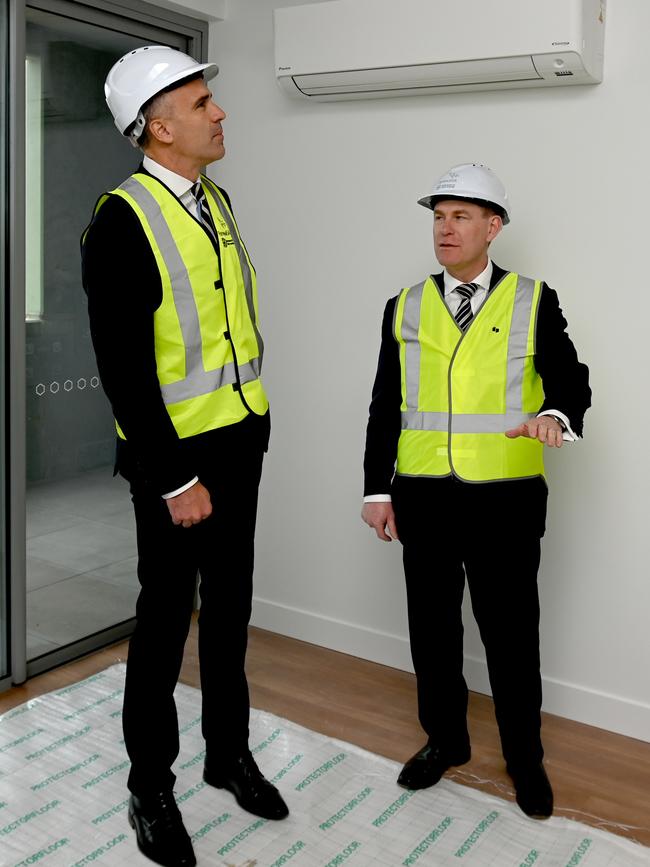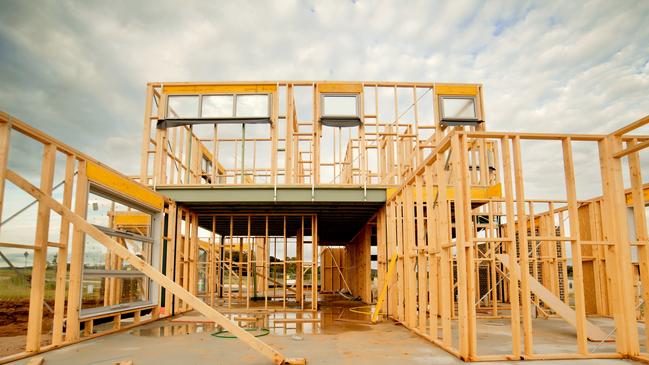Government’s proposed new building standards to force up cost of new homes by $15,000, industry claims
Better energy efficiency and disability access for new homes aren’t just nice accessories any more. The new national rules will push up the price of builds and add to delays, the industry says.
SA News
Don't miss out on the headlines from SA News. Followed categories will be added to My News.
The struggling housing sector has slammed government demands that compulsory energy ratings on new homes be increased from six stars to seven.
The measure, along with better disability access on all new homes, is expected to increase the cost of a new home build by $15,000 and delay construction by months.
In Sydney on Friday all housing ministers, including SA’s Nick Champion, agreed to the changes, which had been rejected by previous governments as too costly.
But the state government has vowed to work with the industry to extend timelines dictated by the national meeting.
“Introducing minimum accessibility standards for new builds will play an important role in improving the everyday lives of South Australians with disability,’’ Mr Champion said.
“Enhancing energy efficiency standards as we build new homes just makes sense, as we work towards a more sustainable future.”
The new minimum standards in the National Construction Code (NCC 2022) prompted sharp rebuke from the industry but praise from the welfare sector.
The meeting voted to bring in the changes from May 1, 2023 with a transition period to October 1, 2023.
The SA construction industry wanted a three-year phase-in period, currently suffering from supply shortages, spiralling building costs and interest rate increases.


Mr Champion said “South Australia will require an extended timeline” but would not commit to the launch date.
Some examples of extra costs from the new rules – which will cut home thermal energy use by 25 per cent – will be better insulation, more efficient heating and cooling, wider doors and corridors, step-free entries and the reinforcement of bathroom and toilet walls for mobility handles.
Housing Industry Association head Stephen Knight said the industry had costed the forced entry-level new-home price hike at $15,000, a figure backed by Master Builders Association ceo Will Frogley.
Mr Knight said without the phase-in period the industry also expected long delays caused by builders battling to adjust to the new scheme.
“There isn’t a single entry-level home design in SA that would comply with the changes and people will literally have to start from the drawing board,’’ he said.
“We believe in SA another problem will be created by the need for wider blocks to accommodate wider houses with better wheelchair access. Here many blocks are narrow.”
Currently, the NCC does not include any minimum accessibility standards for new residential builds.

But South Australian Council of Social Service head Ross Womersley said the short term costs of the plan would be made up over the 80 to 100-year life of most houses.
“The housing industry has not suddenly been hit with these standards, these have been a decade in the making with a clear indication from the building ministers last year,’’ he said.
“Failure to act now means substantially higher costs for future retrofitting will be passed on to homeowners, creating an unreasonable financial burden.”
Mr Frogley said; “The changes are well-intentioned but another blow to housing affordability’’.
“Building is one of the most over-regulated industries around with about 40 per cent of the cost of a new home chewed up by costs other than the build itself,’’ he said.
“The industry has more than enough on its hands right now juggling massive price increases and severe shortages of labour.
“Builders will even have to change all their designs so they are compliant.”
JFA Purple ceo Robbi Williams said the changes would help disabled people live in their own homes.
“Historically people living with disability have been forced to live in segregated settings, like group homes, and part of this is due to the lack of accessible housing in the community,” he said.
Chief executive of Building Better Homes, Tim Naughtin said older Australians, young families and people experiencing temporary injuries were often forced into expensive retrofitting.
“For some that might mean not being able to use the toilet or have a shower or even be able to get in and out of their own front door without serious assistance or costly modifications,” he said.




